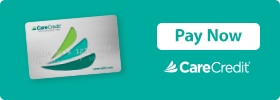Interventional Methods for Pain Management
If you’ve lived with pain for a long period of time, you understand that the effects of it extend beyond your injury or condition. In fact, most individuals claim that living with chronic pain dramatically compromises their overall quality of life. The Centers for Disease Control and Prevention explains that chronic pain is one of the most common reasons that adults in America seek medical care. Unfortunately, this often leads to restriction of daily activities, dependence on medications (opioids), anxiety, depression and poor perceived health. With this in mind, there is a movement towards interventional methods for pain management, including specific exercises, electrotherapy, injections and a psychological component of mindfulness.
Allied Pain & Spine Institute uses the latest in cutting-edge research and technology to customize pain and rehab solutions for acute and chronic pain conditions. That’s because we place a high value on quality of life and wellness.
Conventional methods for pain management usually include rest and allowing time for an injury or condition to “recover.” Though there’s value in doing so, certain forms of exercise can actually alleviate pain, when appropriate. From core strengthening to water aerobics, yoga, Pilates and low-impact aerobics, our team aims to strengthen muscles that make daily movements and activities easier.
In turn, electrotherapy delivers gentle electrical impulses to affected areas, altering one’s perception of pain. A TENS (transcutaneous electrical nerve stimulation) unit, IF (interferential stimulation) and HVGPS (high voltage pulsed galvanic stimulation) are a few examples. As such, electrotherapy reduces chronic pain relating to Sciatica, low pain or neck pain, Fibromyalgia and Diabetic nerve pain.
Furthermore, steroid injections, which are comprised of an anti-inflammatory medication, are administered directly to an injured or damaged area. However, it’s important to understand that the purpose of a steroid injection is to enable a patient to participate in rehabilitation activities needed to strengthen their muscles. In other words, the steroid itself doesn’t “cure” a condition—it simply eases pain and encourages mobility.
Aside from physical strengthening, electrotherapy and pain relief through steroid injections, NSAIDs or muscle relaxers, individuals can also engage in mindfulness training. The team at Allied Pain & Spine Institute realizes that effective pain management alternatives require a full-circle approach, and guiding patients in meaningful thinking exercises that change their perspective on pain can bring much needed relief.
Contact us today to schedule a consultation at Allied Pain & Spine Institute.
Posted on behalf of Allied Pain & Spine Institute

